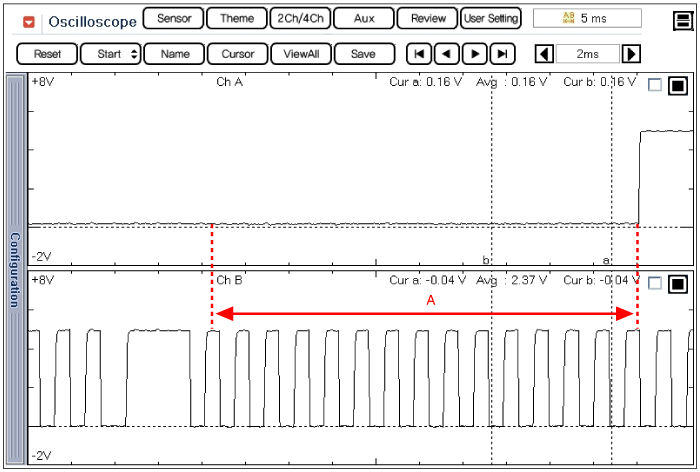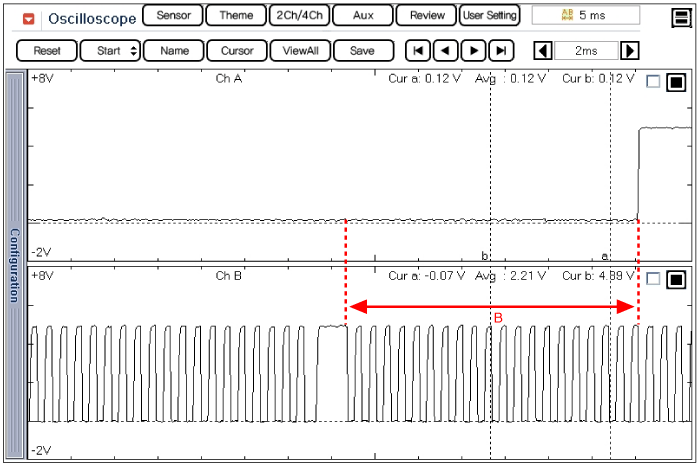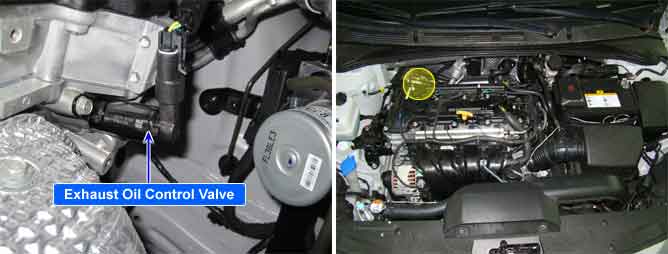Start the engine and check for signal waveform compared with reference waveform as below.



The CVVT (Continuously Variable Valve Timing) system built on the camshaft helps the engine decrease the exhaust gas and increase engine power and fuel economy by changing the valve open/close timing of the camshaft continuously. The valve control solenoid, the main control part of the CVVT, changes the direction of the oil path through the CVVT by the duty control of the PCM and changes the open and close timing of the intake and exhaust valves.
PCM sets DTC P0079 if the PCM detects that the exhaust valve control solenoid control circuit is short to ground.
Item | Detecting Condition | Possible Cause |
DTC Strategy |
•
Electrical Check | 1. Short to ground in control circuit 2. Poor connection or damaged harness 3. Faulty Exhaust Valve Control Solenoid |
Enable Conditions |
•
10V < Battery voltage < 16V | |
Threshold Value |
•
Short circuit to ground or open circuit | |
Diagnostic Time |
•
2 sec. | |
Mil On Condition |
•
2 Driving Cycles |
Oil Control Valve | Normal Parameter At 20℃ (68℉) |
Insulation Resistance | 9.9±0.5Ω |
Set up an oscilloscope as follows :
Channel A (+): Signal terminal of the CMPS #2(back probe), (-): ground
Channel B (+): Signal terminal of the CKPS(back probe), (-): ground
Start the engine and check for signal waveform compared with reference waveform as below.


A : CMPS and CKPS waveform of exhaust shaft at idle
B : CMPS and CKPS waveform of exhaust cam shaft at acceleration
(Tooth number is changed by CVVT operation)